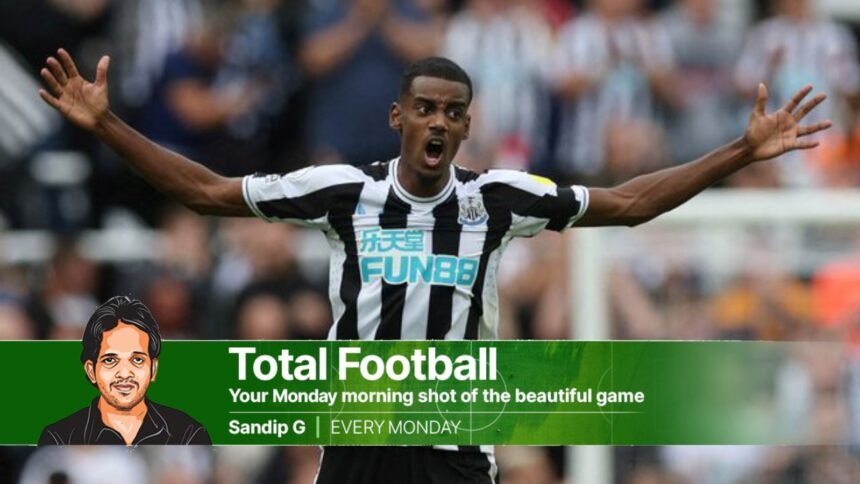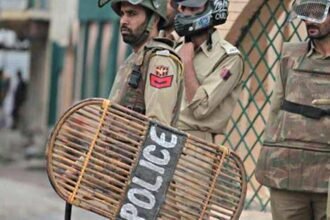One evening, a teenaged striker for the Swedish club AIK received a video call from an unknown number. He casually picked it up, only for his eyes to leap out of the orbit. At the other end was Ronaldo Nazario, one of his idols. The Brazilian requested him to join Real Madrid. He stumbled for words and just kept nodding his head. But a month after the call, he ignored Madrid and signed for Borussia Dortmund, the lapidarist club where raw stones are polished to shining gems.
Madrid, his parents reasoned, was a step too soon. His parents, migrants from Eritrea who fled the war and settled in the Bagartorp just outside Stockholm in the late 80s believed in steady rather than spectacular promise.
Eight years later, tracing unconventional paths with stops at Dutch Club Willem II (loan spell), Real Sociedad and Newcastle United, and suffering occasional setbacks, he could become the third most expensive transfer in the world after PSG recruits Kylian Mbappe and Neymar. His services would come at an eye-popping 150 millions pounds. Add agent fees, add-ons and transfer levy, he could cost around 200 million pounds.
Yet, Alexander Isak is not a name that rolls off the tongues of football audiences with as much marvel as those of Mbappe or Neymar. Eyebrows are twitched, chins are stroked, and sometimes heads are banged. It could be that he turns up for Newcastle, a club that has more cult than mainstream adulation, or that he is not a face that screams from advertisement hoarding, or that he keeps an obscenely low profile off the pitch.
The first question that swims in the head is whether his price is inflated? Is he or the club living a delusional neverland? Naysayer would pour his supreme but inferior numbers (26 goals and six assists in 42 games) as compared to some of the inflows in this season of gluttonous spending spree. Arsenal, after protracted negotiations, have landed Viktor Gyokeres, for half the sum (73 millions pounds) and twice the number of goals (54 goals and 13 assists) last season. Liverpool’s latest fetch Hugo Ekitiké struck 22 times and assisted 12 goals and cost 79 million pounds. Pure economics suggests Isak’s price-tag is a rip-off. But footballing intelligence suggests that Newcastle are not bound by greed. Rather, it’s a peep into how the transfers work.
Foremost, he is among the best in the business, just behind Erling Haaland and Mbappe in finishing but more hardworking than them off the ball. Last season, he skinned the Premier League’s most trustworthy centre-back pairing of William Saliba and Gabriel of Arsenal in both legs of the League Cup semi-final with his pace, intelligent pressing and precision. By the end of the second leg, Arsenal supporters were pleading with Arteta to buy him the next season. That could yet be a reality, as the Gunners, if they squeeze the account book could orchestrate the wish of the fans. But at this stage, Isak remains a glint-eyed temptation and not a concrete plan.
In Newcastle, he is deservingly hailed as the best player they had on the rolls since Alan Shearer, the highest goal-scorer in the league. Like Shearer, he has the immaculate sense of the goal, to process the patterns of the game and anticipate the ball’s passing sequence. The craft of poaching is oversimplified to just being at the right place at the right time. Ignored are their vision and intelligence to be at that place, to weave past his markers, to wander invisibly like a phantom. Last season, Isak was exceptional inside the box. He possessed a conversion rate of 30.26, nearly double as much as Ekitiké.
Story continues below this ad
Rewatching both legs of the Arsenal game would offer an affirmation of his poise when hounded by defenders or the onrushing goalkeeper growing big on him, his knack of throwing defenders (Saliba, no less) off-balance is exemplary. He is not averse to scoring from long range either. A 25-yard screamer against Liverpool was vintage EPL stuff. He is not a see-ball-hit-ball type either. The movements are balletic, he dribbles but with minimalistic precision, he drifts out and slithers in with a casual swivel that throws the frantic marker off-kilter. He was first compared to Thierry Henry because they wore the same jersey No (14); two years in the league, it doesn’t seem like a silly hyperbole. Like ex-Liverpool centre forward Roberto Firmino, he drops deeper into the pockets, between the lines of defence and midfield.
An acute shortage of centre forwards adds a few millions. Premier League experience adds a few more. He is Premier League proven, Ekitiké is not, Brighton did not consider Gyokeres rounded enough to feature in the league and loaned him out to Bundesliga and Championship sides. Whereas he has improved in recent years and excelled against English teams in Champions League, there are still lingering doubts of him setting the goalscoring charts on fire. Besides, he is 25, just about hitting the peak.
Other factors too are at play. Like the desperation of a club to sell a player. Newcastle is not a club that grooms and sells players, it’s ambitious and desperately tried to keep Isak at St James’ Park. It’s utterly reasonable that the club has stuck a tag that limits his acquisition to only a handful of Europe’s elites. Only that his timing of his transfer request came a trifle too late. The big spenders had already exhausted a bulk of their budget. A heated bidding war is unlikely; it could be just one ambitious club making a decisive swoop. Or a legend making an impromptu video call.








